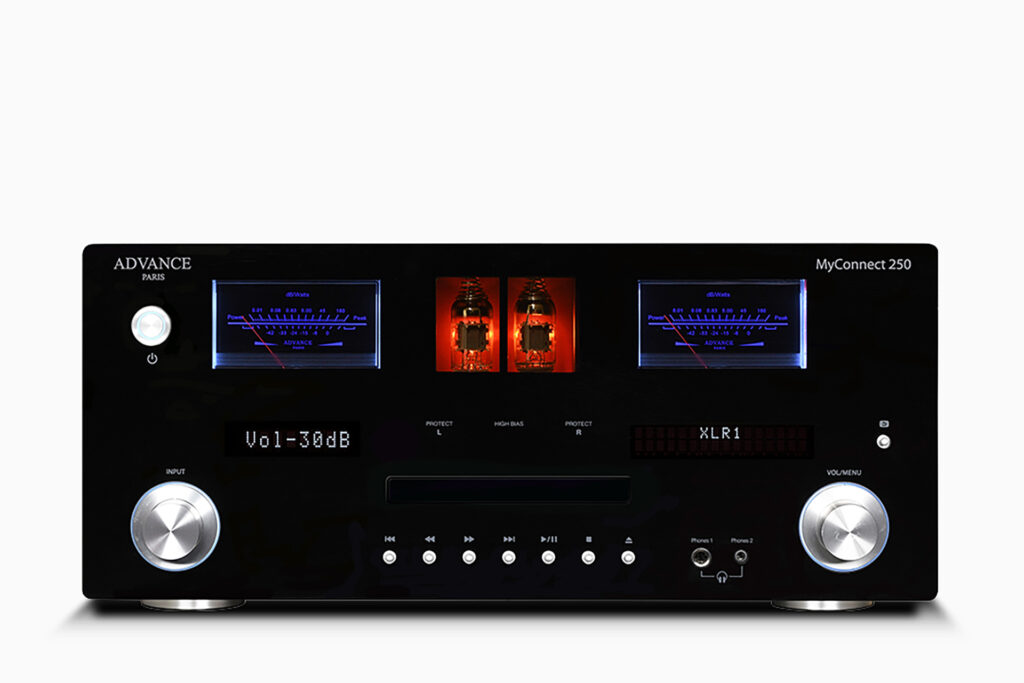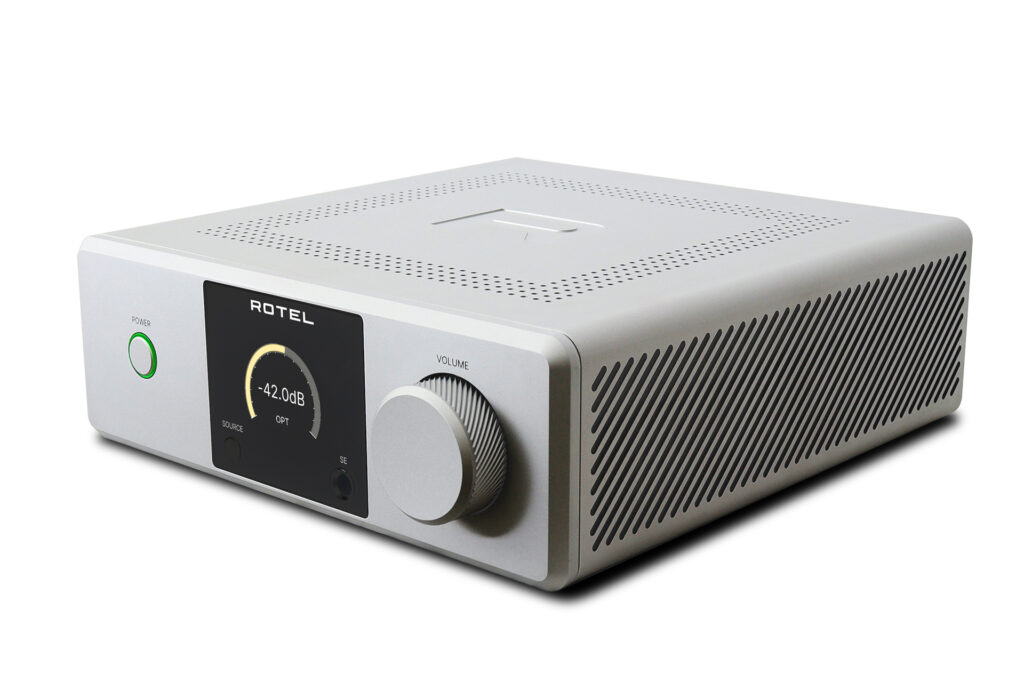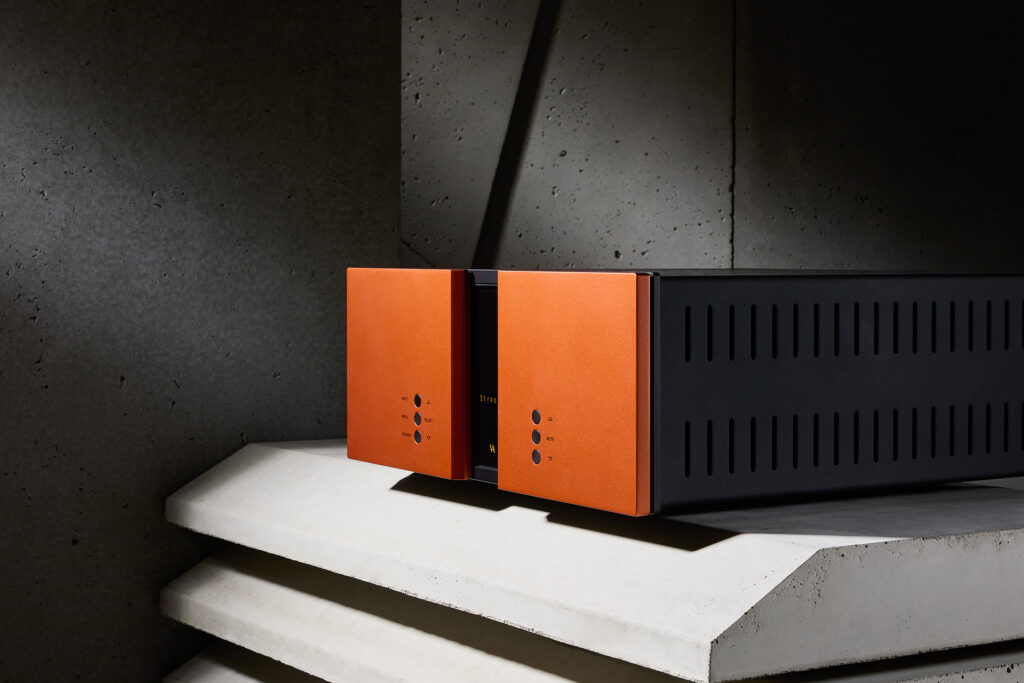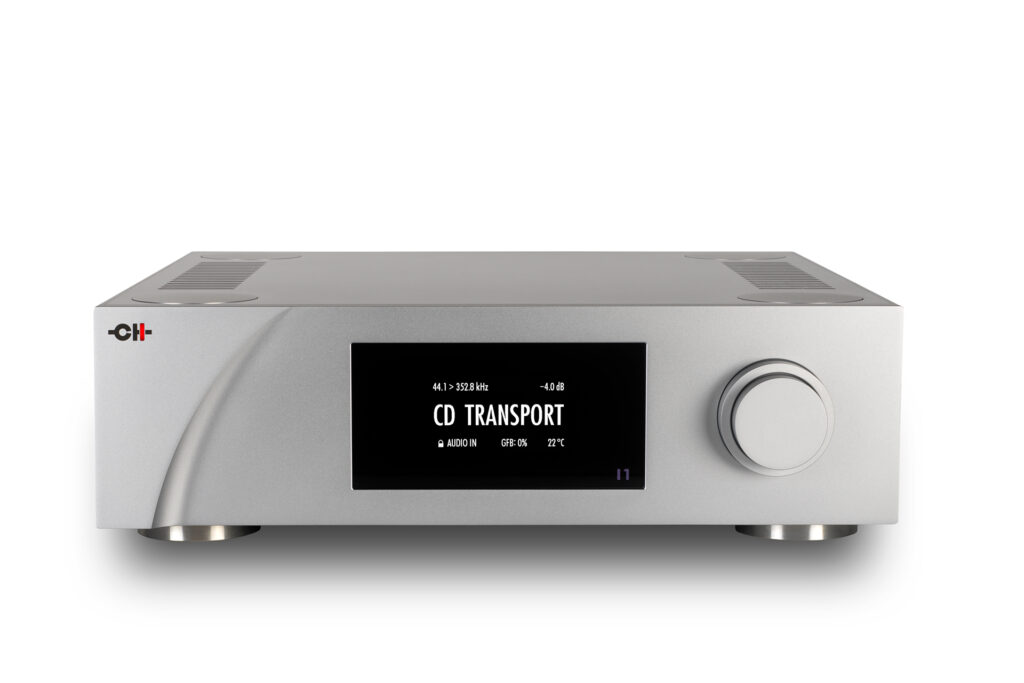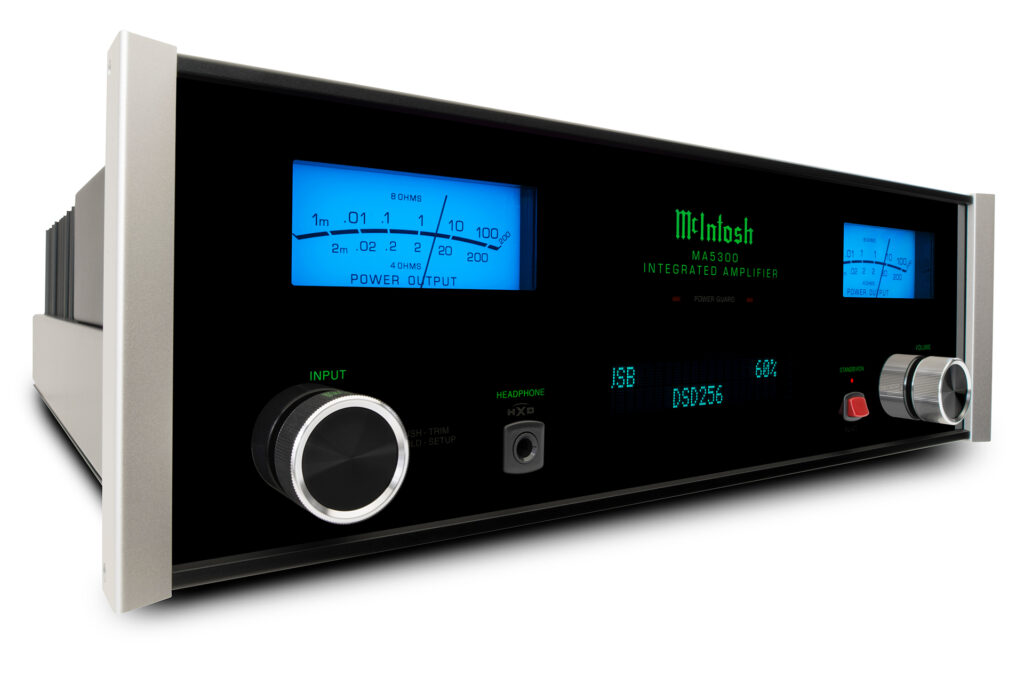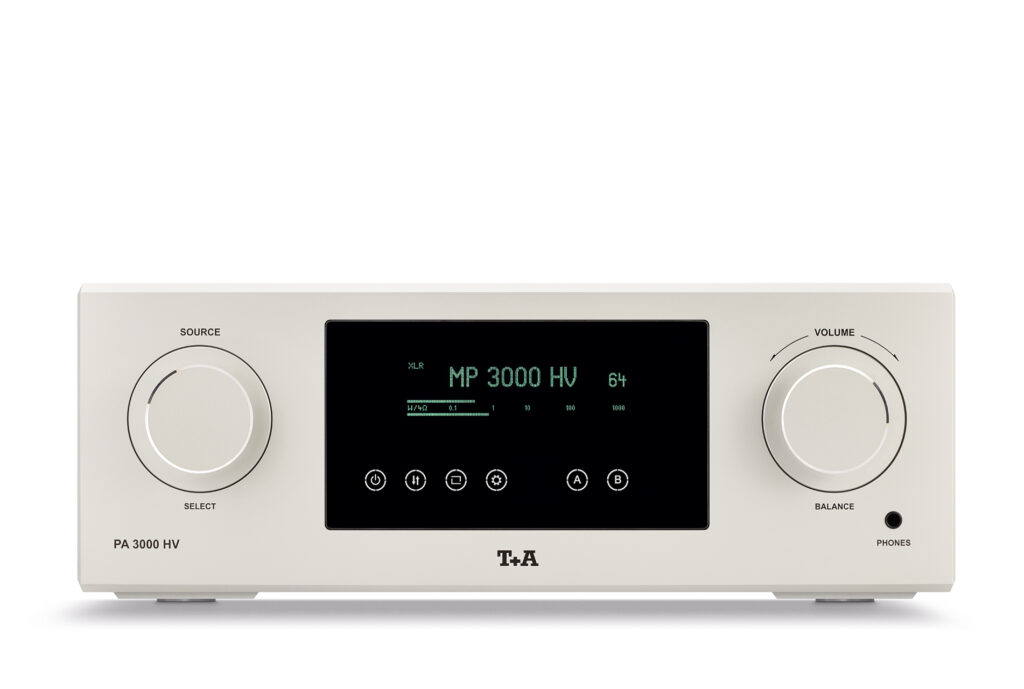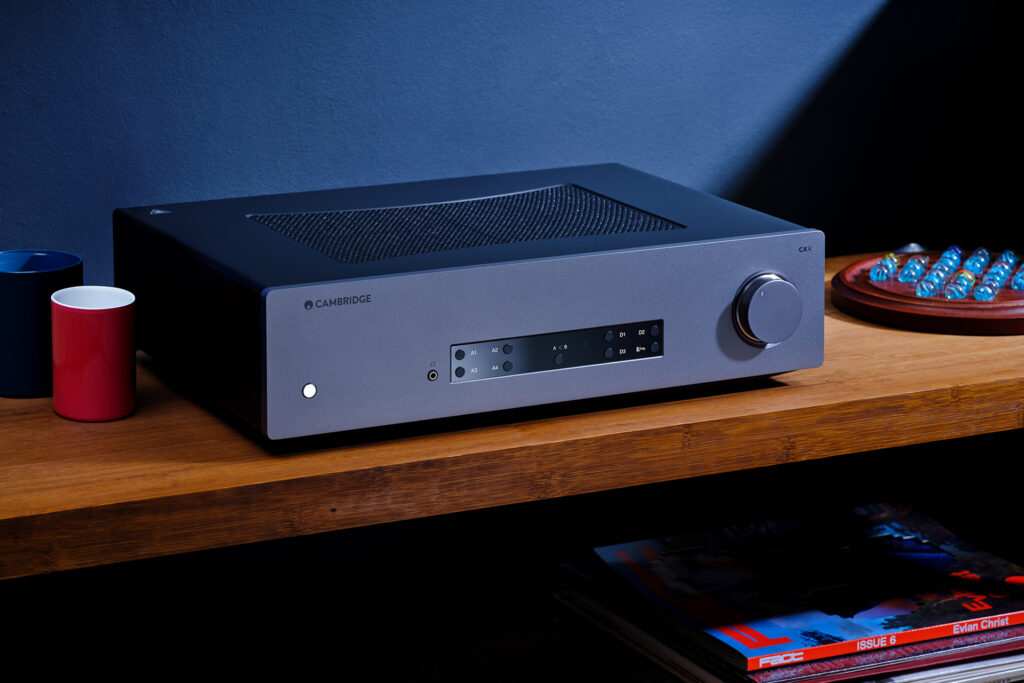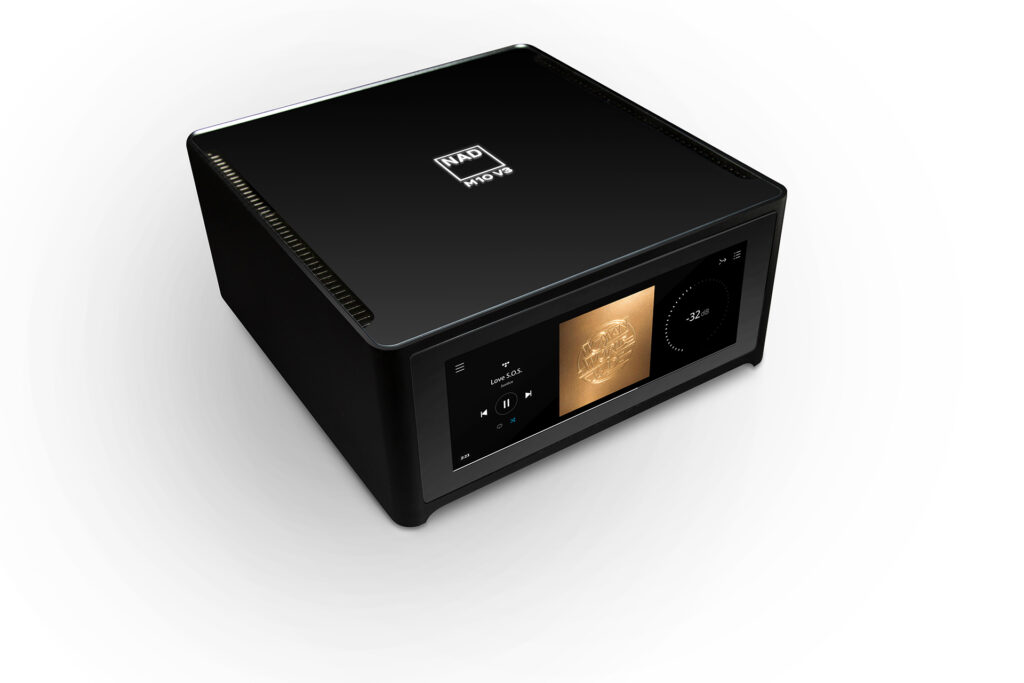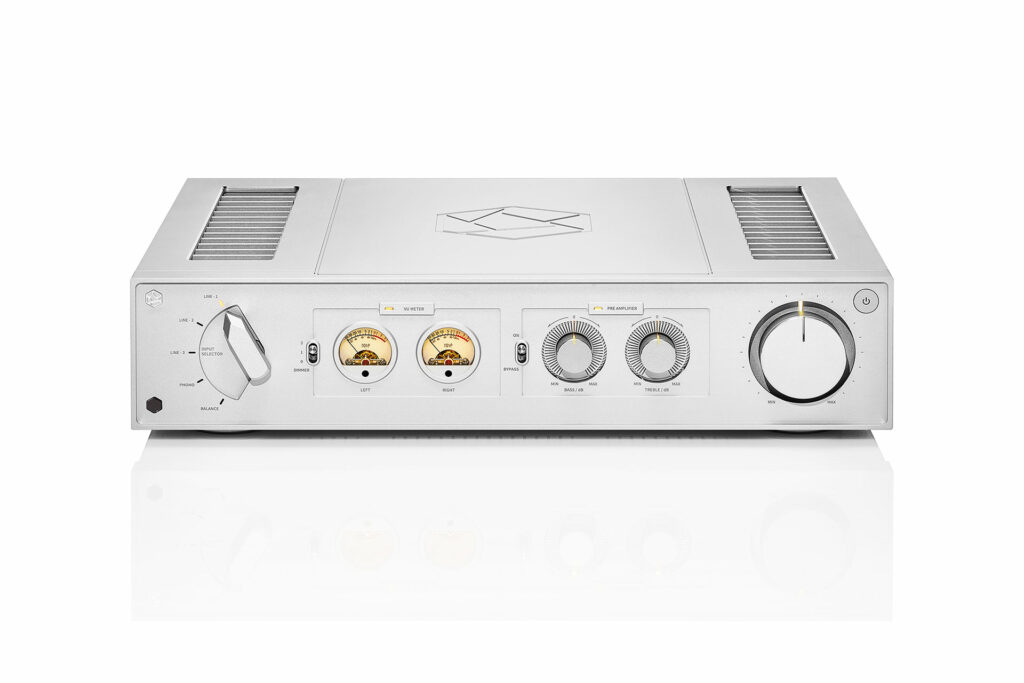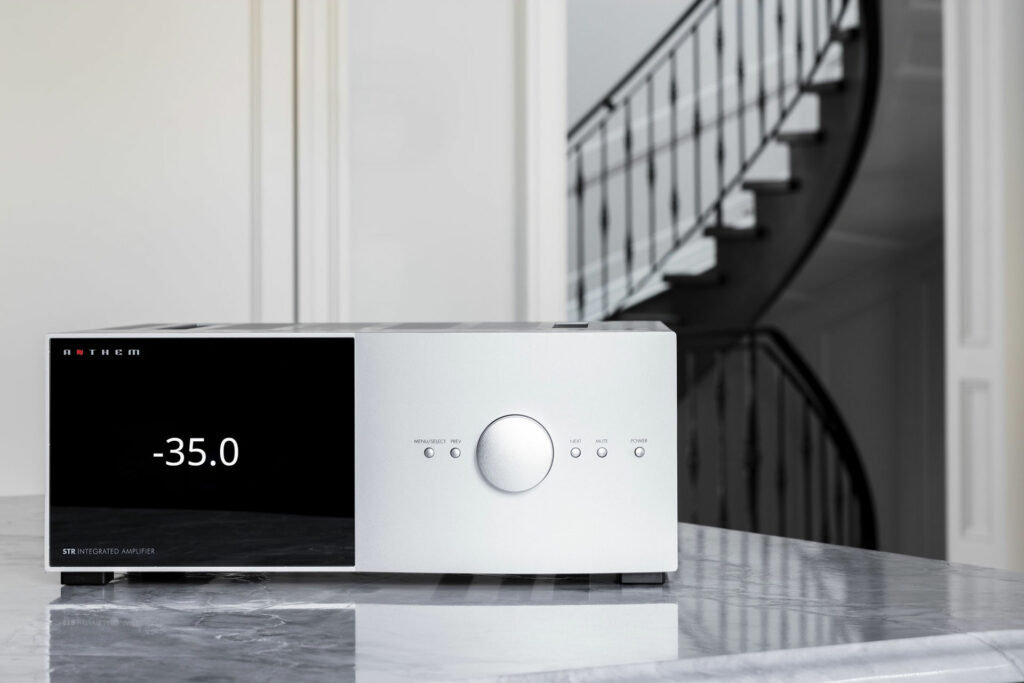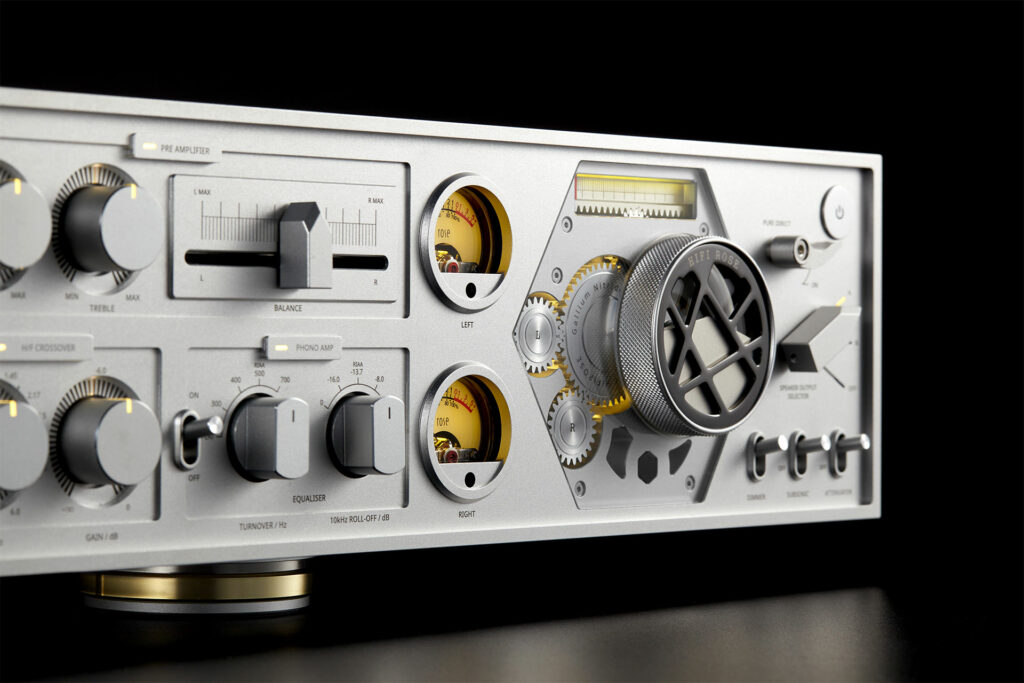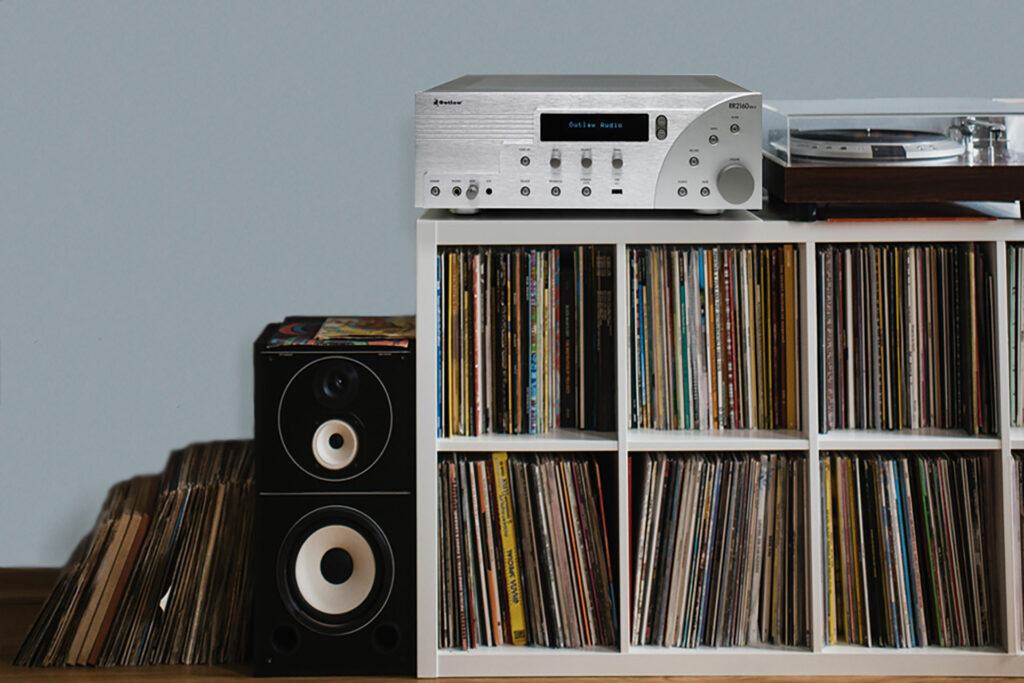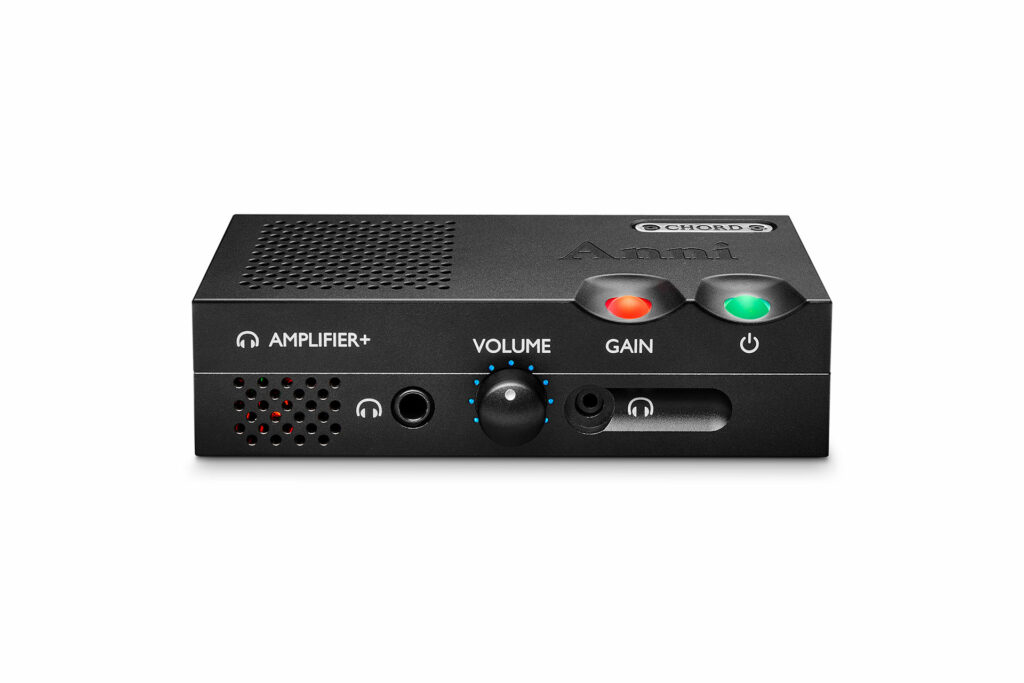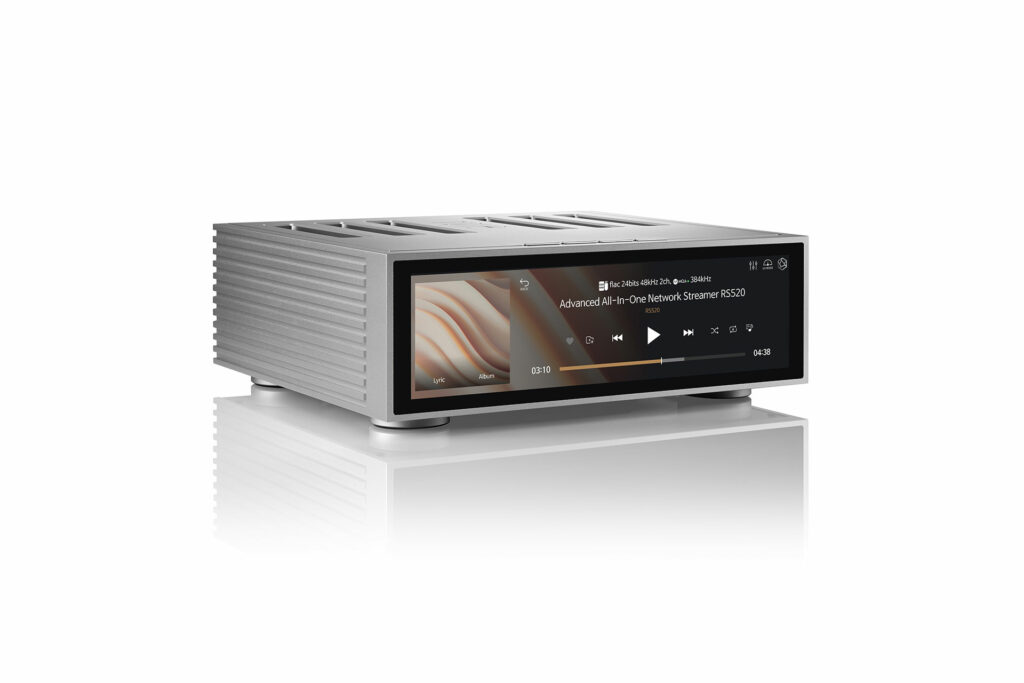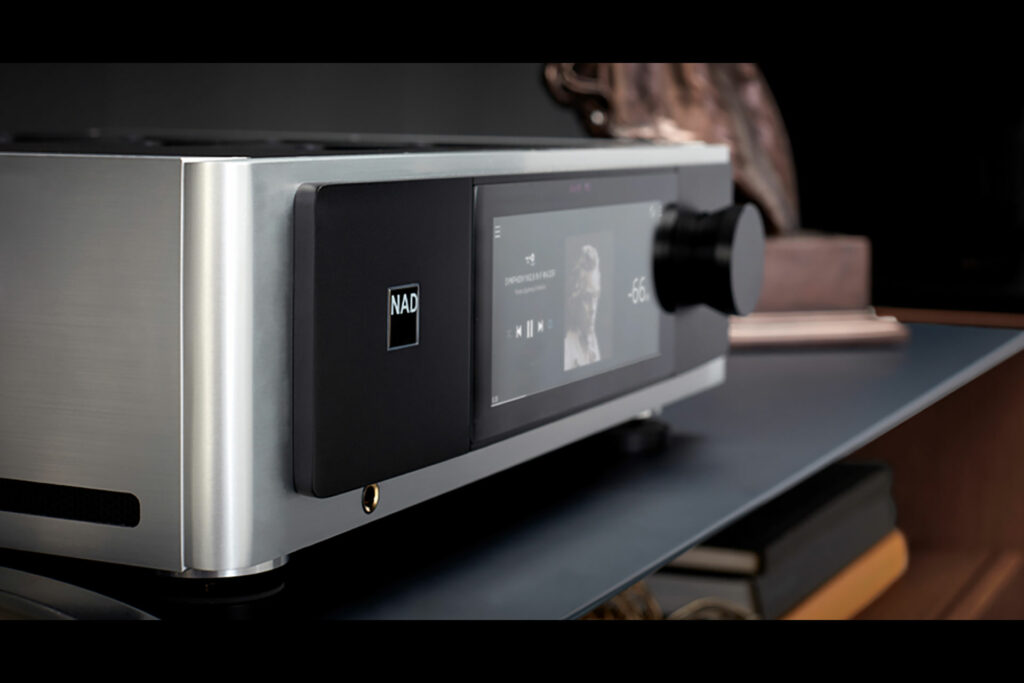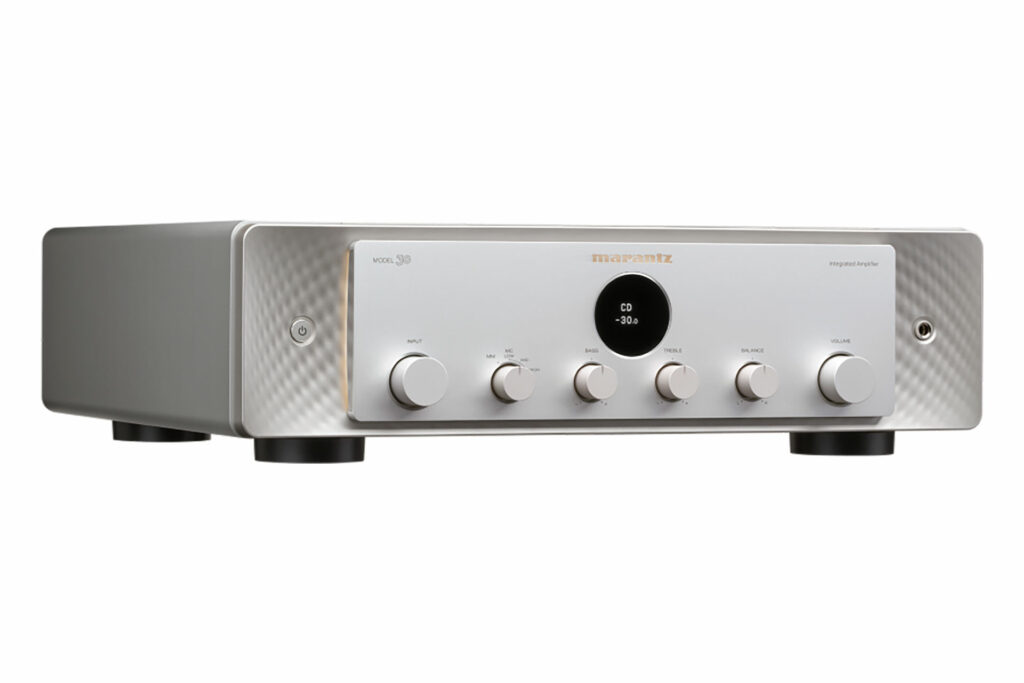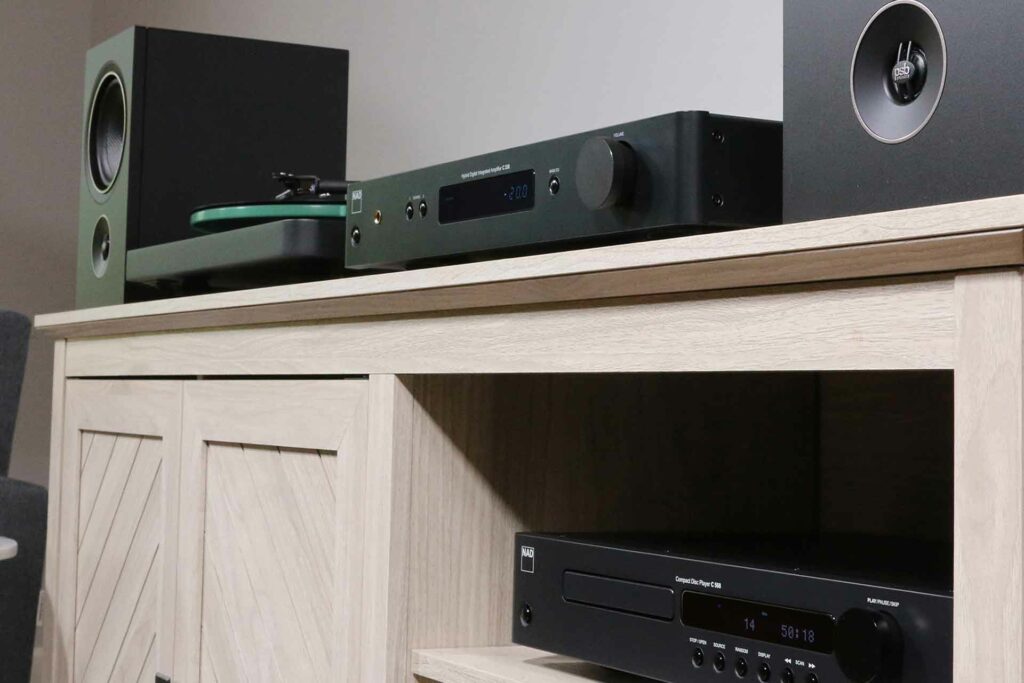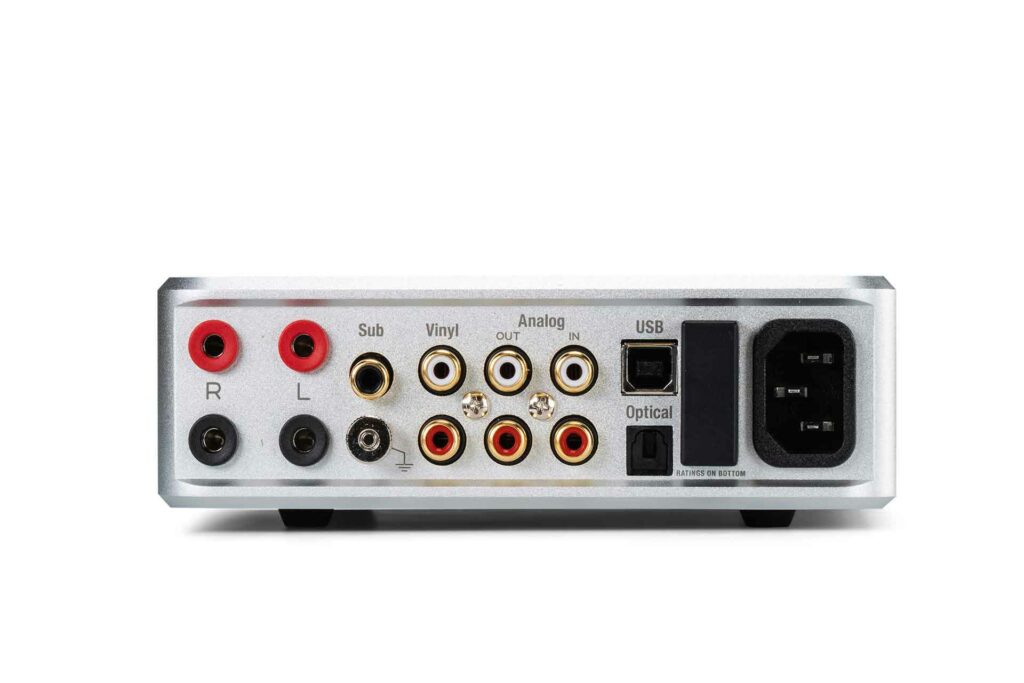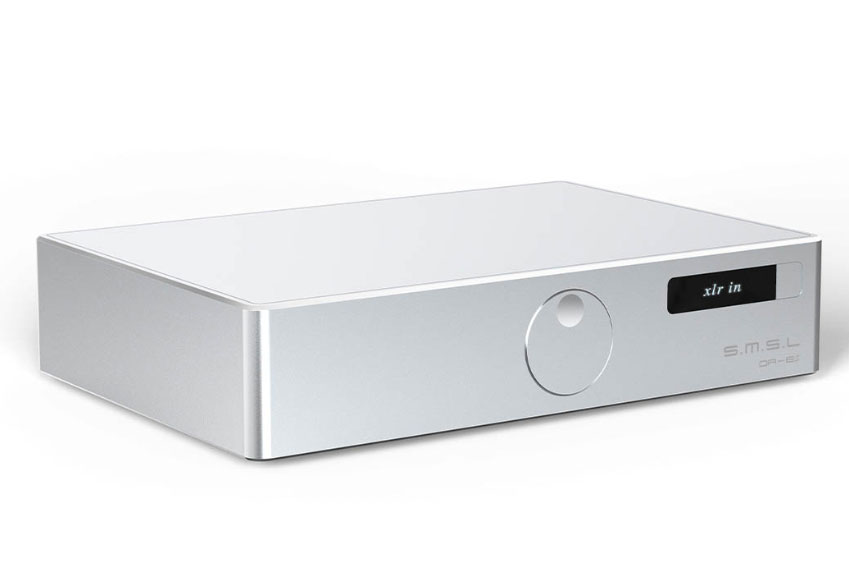Read More Audiophile Integrated Amplifier Reviews
ASR Emiter 1 Two-Chassis Integrated Amp Reviewed
In the audiophile world, it is rare but not uncommon to see a top-level dealer import a more obscure, non-distributed product, thus become their de facto U.S. distributor. These dealers take the risk of bringing the product over from wherever… Read the Review »
Rotel DX-5 Integrated Amplifier Reviewed
There are not too many audiophile brands out there today that have the history that Rotel does. As a company, they are in their 64th year as a family-owned and operated business that makes some of the most well-known, affordable… Read the Review »
Vitus Audio RI-101 Mk.II Reference Integrated Amplifier Reviewed
Hans-Ole Vitus, founder of Vitus Audio, began playing drums at age 12, and soon thereafter developed his admiration of the gear being produced by a company founded by fellow Danes, Gryphon Audio Designs. By 18, he was studying electronics and,… Read the Review »
CH Precision I1 Universal Integrated Amplifier Reviewed
Founded roughly 15 years ago in Switzerland by Florian Cossy, CH Precision has gained a reputation for incredible engineering, incredible performance, incredible sonics, incredible build quality, versatile modularity, and user adjustability in the uber-high-end audiophile world. Not surprisingly, they are… Read the Review »
McIntosh MA5300 Stereo Integrated Amp Reviewed
The terms “legendary” and “iconic” are used to describe McIntosh electronics, just as they are used to describe, say, Harley Davidson motorcycles. Rarely has the term “scandalous” or “disruptive” been used to describe the 75-year-old audiophile based in Binghamton, New… Read the Review »
Gryphon Audio Diablo 333 Integrated Amplifier Reviewed
Gryphon Audio was founded in Denmark in 1985 by Mr. Flemming Erik Rasmussen and has, since its inception, assiduously and unapologetically pursued audiophile excellence with the goal of becoming and maintaining what it terms as an aspirational brand. Rasmussen, himself… Read the Review »
T+A elektroakustik R 2500 R Multisource Receiver Reviewed
When I initially received the latest component for review from German manufacturer T+A, I was both very intrigued and pleasantly surprised. Right out of the box, the T+A R 2500 R exuded an overall feeling of quality. It is aesthetically… Read the Review »
T+A elektroakustik PA 3100 HV Integrated Amplifier Reviewed
Herford, Germany’s high-performance audio manufacturer T+A predominately operates under one guiding principle – “the appliance of science.” In fact, the T+A corporate name is an acronym for what the company enthusiastically describes as “theory and application.” With a staff of… Read the Review »
Cambridge Audio CXA81 MKII Integrated Amplifier Reviewed
Cambridge Audio is an audiophile electronics manufacturer with a lineage that dates back to the late 1960s. Cambridge Audio’s products today are as relevant as ever, including some really slick designs such as their sexy-as-hell, DeLorean-themed integrated amplifier. The Cambridge Audio… Read the Review »
NAD M10 V3 Master Series Integrated Amp Reviewed
No one brand has impacted more audiophiles in their early years than NAD. For my fourteenth birthday, my Dad generously bought me a Nakamichi Music Bank CD changer, a pretty sweet NAD receiver, a pair of Polk floorstanding speakers, and some classic… Read the Review »
HiFi Rose RA280 Integrated Amplifier Reviewed
Few brands have caught my eye over the last 12 months as much as has HiFi Rose. They are among the few companies in the audiophile market that look like they are making some changes in their products. We see… Read the Review »
Anthem STR Integrated Amplifier Reviewed
The Anthem STR (buy at Crutchfield) is a midrange option in the world of audiophile integrated amplifiers with a price tag of $4,999. Anthem has chosen to take a very audiophile route with this integrated amplifier. What I mean by this is that, instead of… Read the Review »
Pass Labs INT-250 Integrated Amp Reviewed
One of the most affordable and, in this case, powerful ways to rock your audiophile system is to look for a high-end integrated amp for your power needs. The Pass Labs INT-250 is one of many strong options in the $10,000-plus price… Read the Review »
HiFi Rose GaN Integrated Amplifier RA180 Reviewed
Let’s face it, not every audiophile has the room or desire for separate components for their electronics. The HiFi Rose RA180 integrated amplifier (buy at Crutchfield) was built specifically for this group of audiophiles who prefer a one-box approach, but… Read the Review »
Outlaw Audio RR2160MkII Integrated Amplifier Reviewed
The RR2160MkII (yes, that is a mouthful) is an integrated amplifier from the direct-to-consumer brand Outlaw Audio. If you’re not familiar with Outlaw Audio, they are a Massachusetts-based company that was founded in 1999, and has been making fine audiophile-grade products ever… Read the Review »
Chord Anni Integrated Amplifier Reviewed
The Anni from Chord Electronics is a small form factor, desktop-style integrated amplifier. This small but powerful integrated amplifier features both a 3.5 and a quarter-inch headphone jack, as well as 10 watts into eight ohms of Class AB amplification… Read the Review »
Leak Stereo 230 Integrated Amplifier Reviewed
The Stereo 230 from Leak is a modern take on a heritage design from the English audiophile brand Leak, which has been making high-performance components since 1934. This $1,695 integrated amp is designed to look similar to the Stereo 30,… Read the Review »
HiFi Rose RS520 Network Streamer and Integrated Amplifier Reviewed
The RS520 from Korean brand HiFi Rose is a what the company calls a “All-In-One Network Streamer.” In this case, all-in-one means it has a built-in network player, DAC and amplifier, and I can tell you that is just scratching… Read the Review »
NAD M33 Integrated Amplifier Reviewed
The NAD M33 (buy at Crutchfield) is so much more than an integrated amplifier that it’s a shame that we have it listed in our audiophile amplifier category. Unfortunately, we don’t have a Swiss Army Knife of Audio Components category… Read the Review »
NAD C 3050 Integrated Amplifier Reviewed
The 3050 may be NAD’s newest audiophile integrated amplifier, but it takes little more than a casual glance to see that it’s been inspired by some of their most meaningful legacy products – ones that helped guide the first steps… Read the Review »
Marantz Model 30 Integrated Amplifier Reviewed
Marantz’s Model 30 integrated amplifier ($2,999 buy at Crutchfield) has a blend of old-school features and design with modern technology, but perhaps not in the way most audiophiles might anticipate. The Model 30 has a classic, old-school interface and feel,… Read the Review »
Music Hall a25.3 Integrated Amplifier Reviewed
The a25.3 is the latest integrated amplifier from Music Hall. This $650 integrated amplifier produces 50 watts of power per channel into 8 ohms, and 75 watts per channel into 4 ohms, and it comes equipped with Bluetooth, a moving… Read the Review »
NAD C 338 Hybrid Digital DAC Amplifier Reviewed
The NAD C 338 Hybrid Digital DAC Amplifier (buy at Crutchfield) is a budget friendly $799 integrated amplifier from one of the industry’s most storied audiophile brands. Its power section provides 50 continuous watts of output into both 4 and… Read the Review »
PS Audio Sprout100 Integrated Amplifier Reviewed
The PS Audio Sprout100 (buy at Amazon) is an entry level audiophile integrated amplifier made by the folks at PS Audio. Packed into one tiny little package (and I mean tiny) it measures at 6.2 inches wide by 1.9 inches… Read the Review »
SMSL DA-8S Integrated Amplifier Reviewed
Most affordable Bluetooth or powered speakers simply don’t provide the musical experience that gives you the goosebumps. There is a point for many music fans who are looking for a more visceral audio experience when they need to upgrade to… Read the Review »
Click to See All 26 Reviews
Reading Time: 6 minutes
How Does an Audiophile Integrated Amp Work?
Depending on the feature set of said audiophile integrated amp, this component can be the centerpiece of your stereo system. At the most basic level, an audiophile integrated amp is a place to manage and switch the external audiophile components that you own. If you have a standalone Compact Disc player, you might plug it into an integrated amp via an analog input. Some integrated amps have a DAC (digital to analog converter) that allows you to connect audiophile sources via a digital cable via any number of potential formats, be these optical, COAX/S-PDIF or perhaps USB (better for computers/data than audio). More and more integrated amps are WiFi-enabled, allowing a level of connectivity that is also a way to easily make future firmware upgrades.
Your audiophile integrated amp cannot just switch inputs, but it can attenuate the signal itself. By this, we mean that you can control the volume of the sound for your sources. Some integrated amps allow for volume matching, so that even if your incoming source components have different levels of output, you can match them in the settings of your integrated amp. One aspect that even some seasoned audiophiles don’t know about is that, in order to fairly evaluate an audiophile component (like a source component), you must have the volume matched. If one component is louder (aka: more output) than another, the louder one will tend to sound better to most ears. This goes for even the most trained audiophile listeners.
Sticking with the basic operation of an audiophile integrated amp, after switching and attenuating volume, the next main function would be to boost the signal via the integrated amps internal amplifier. This is no different than how separate components might work. However, the integrated amp is an all-in-one solution that shares the same power supply and delivers very tempting system simplicity. Today’s modern audiophile integrated amps have all types of high-performance amplifiers inside of them. Traditional integrated amps had Class-A/B amplifiers in them, and many today continue this trend. There are old-school audiophile amplifiers with tube amplification included for those who are looking for that sound and that level of enthusiast engagement. The big trend in modern audiophile integrated amps when it comes to internal amplification is that they now tend to use Class-D or switching amps. These semiconductor-based amplifier technologies, including GaN (Gallium Nitride – learn more here), Hypex and Pascal, have improved radically in recent years. These technologies deliver sonic performance that resembles the best characteristic of Class-A operation or tube amps, but without the heat, weight, size, energy use, and cost. Inside of a top-performing integrated amp, this is a huge performance advantage, but also advantageous on many other levels.
Other features that can be found on some, but far from all, of today’s integrated amps include internal streaming, Internet radio control, a phonostage, room correction from various different respectable firms, and so much more. Some of today’s most forward-thinking integrated amps have HDMI inputs, which neatly integrates more mainstream audio/video sources, such as a Roku, an Apple TV, a satellite receiver, or perhaps a Blu-ray player. Considering the quality of content that is coming out from studios’ streaming content these days, you might want your integrated amp able to pump in sound from The Masters, Severance, or even a 2.1 movie soundtrack.
What Type of Industrial Design Can One Expect from an Integrated Amplifier?
While the basic features of an amp and preamp in one box are pretty much standard, the design language used to draw up today’s integrated amps is quite varied. Some products are traditional 17-inch wide components, while others, like, say, the NAD M10 v3, are far narrower. There are ultra-modern-looking units like the Cambridge Audio EVO150 “Delorean Edition,” which is, at over $3,000, as much visual architecture as it is sonic technology. At the same time, we gave the 2024 Gear We Love Product of the Year Award to the NAD C 3050 integrated amp, which couldn’t be more of a vintage audio-looking product, regardless of its bleeding-edge feature set and internal technologies.
On the uber-high-end of the integrated amp market, you will find products that are true audio jewelry. A D’Agostino amp is a steampunk statement in aesthetics, and they make a very expensive integrated amp. Gryphon, from Denmark, makes some of the most strikingly masculine-looking high-end audio products, and its Diablo 333 integrated amp is nothing short of stunning in terms of industrial design.
What Are Some of the Reasons Not to Invest in an Integrated Amp
Integrated amps offer simplicity, a compact size, and often robust feature sets, but, with those compliments given, they are not for every audiophile. One issue that is problematic with integrated amps is that, when an audiophile makes an investment in an integrated audiophile component, how does he or she upgrade in the future? Imagine you have an NAD C 3050 that you invested roughly $1,500 USD in, and you want more power for your new floorstanding speakers. Nearly all integrated amps have analog preamp outputs, so that you can bypass the amplifier section. That’s an easy upgrade, but what if you wanted to upgrade your preamp? That’s not impossible, but is it trickier? What if you wanted to take the money that you invested in the internal streamer, which is, in effect, a BlueSound Node inside of your integrated amp? You can’t cherry-pick that component and take it out of the integrated amp, so you won’t reclaim that investment until you move to separate components, which are costlier with cables, as well as bulkier, but they are also more easily sold and upgraded.
One thing that almost always makes an audiophile component sound better is a more robust power supply. Digital products like DACs, Class-D amps and others benefit more than more traditional electronics, but really, every component can benefit from a more robust power supply. In audiophile integrated amps, there is one power supply. Could your sound improve from components that have their own power supplies? Probably yes, but there is a price to be paid in simplicity as well as cost. A $37,000 CH Precision integrated amp from Switzerland is going to have an incredible power supply, where a $99 Fosi integrated amp will not. In the lower price ranges, separates can really benefit from their own power supplies.
Do Audiophile Integrated Amps Have Good Resale Value?
This is a complicated question. If you buy an integrated amp from a blue-chip audiophile company, you will benefit from their collective resale value. Companies like, say, Marantz or NAD, which are sold by most of the best retailers in the United States, will have better resale value than less well-known brands. Integrated amps with full-feature sets (especially HDMI and room correction) will have more longevity as they remain relevant to the music-loving consumers for years to come.
Some integrated amps are so affordable to begin with that the issue of resale value is practically irrelevant. If you had a $399 integrated amp in one of your systems for five years, how much does the component owe you then? Likely not very much. Perhaps giving said component away to a young, aspiring audiophile or moving such a component into another room would be a more real-world solution?
What Are Some of the Most Historically Important Integrated Amps?
For audiophiles, integrated amps represent an all-in-one solution that might not benefit from separate chassis and/or power supplies but do provide a wonderful and welcomed level of simplicity.
Audiophile integrated amps range in price from Chi-Fi options at $99 to mid-priced units in the $1,000 to $2,000 range with uber-audiophile products costing $30,000 to $100,000 USD. The first review that we ever published at FutureAudiophile.com was of a stunning pretty $169 S.M.S.L. integrated amp. The small sized but sweet sounding Naim Nait dates back to 1983 and is still relevant today. The NAD C 3050 is an updated version of a true classic integrated amp from the 1980s that was a total game changer. Today’s version had HDMI inputs, a class-D amp, room correction and a Bluesound Node streamer all built-in for about $1,400 USD. On the high end there are integrated amps that offer truly uncompromising performance. The Gryphon Diablo 333 comes to mind. Boulder’s 866 was another killer way to get into their very expensive electronics via an Integrated amp. The Pass Labs INT-250 is a well-conceived merger of the Pass Labs X-250.8 amp and the Pass Labs XP-12 preamp all on one chassis. CH Precision offers a $35,000 integrated amp with a lot of upgrade options for those looking for a high end Swiss design. Vitus Audio is a Danish option in the $25,000 range.
What is Chi-Fi and Do They Make Integrated Amps?
Chi-Fi is short for Chinese HiFi. The companies that make products in Asia for many of our favorite audiophile brands (aka: OEMs) have been coming out with their own branded products that are really compelling. The prices on Chi-Fi components are often impossibly low. The first product ever reviewed on FutureAudiophile.com was an S.M.S.L. DA-8S integrated amp for $199 that blew our minds in terms of performance, industrial design, and overall value. These value products (and not all come from China, such as Schiit, which is designed and often made in the United States) allow people to get started in the hobby at new, ultra-low prices. They make some really amazing products in the integrated amp category, for example, a small form factor $99 integrated amp like the Fosi BT20A. Chi-Fi products often have newer technologies than comparably-priced used integrated amps. You can spend $50,000-plus on an integrated amp in a very high-end audio system, but there are very affordable ways to get the same form factor and basic feature sets for about the price of dinner for four at the Olive Garden.
THE BEST Audiophile Integrated Amplifier Reviews FROM THE GEAR WE LOVE AWARDS
